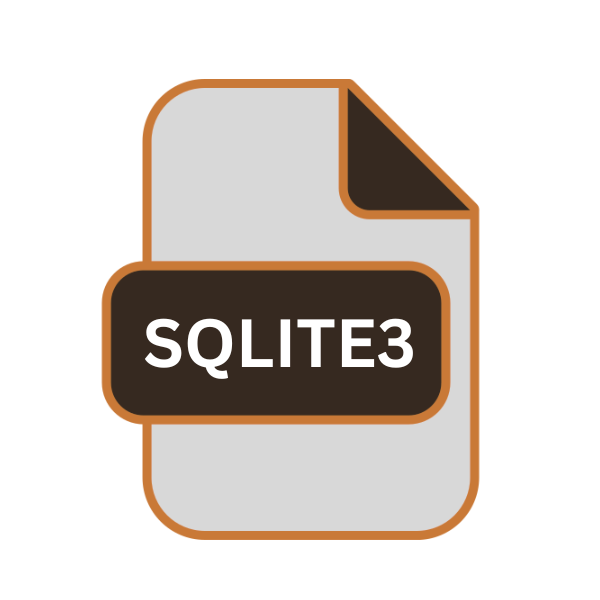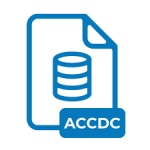.SQLITE3 File Extension

SQLite 3 Database
| Developer | SQLite |
| Popularity | |
| Category | Database Files |
| Format | .SQLITE3 |
| Cross Platform | Update Soon |
What is an SQLITE3 file?
In the realm of digital information storage and management, databases play a pivotal role. They serve as repositories for structured data, allowing for efficient retrieval, manipulation, and storage.
Among the myriad of database management systems (DBMS) available, SQLite stands out as a lightweight, yet powerful, solution. The .SQLITE3 file extension denotes databases created and managed using SQLite version 3.
More Information.
The journey of SQLite began with a modest objective: to create a compact, yet efficient, database engine primarily for embedded systems and local storage applications. Unlike traditional client-server database systems, SQLite operates as a serverless, zero-configuration, transactional SQL database engine.
This unique design philosophy enables SQLite to be seamlessly integrated into software applications, requiring minimal setup and administration.
Initially targeted towards embedded systems, SQLite found utility in a diverse array of applications, ranging from web browsers and operating systems to mobile apps and desktop software.
Its versatility and lightweight footprint made it an attractive choice for developers seeking a reliable, cross-platform database solution.
Origin Of This File.
SQLite, the progenitor of .SQLITE3 files, traces its origins back to the early 2000s. It was conceived by D. Richard Hipp while working for the U.S. Navy, aiming to develop a simple, self-contained, and serverless database engine.
The first release of SQLite occurred in August 2000, with subsequent versions refining its functionality and robustness. Over the years, SQLite has garnered widespread adoption due to its reliability, ease of use, and compatibility across various platforms.
File Structure Technical Specification.
.SQLITE3 files adhere to a well-defined structure, optimized for efficient storage and retrieval of data. Internally, these files comprise various components, including:
- Header: Contains metadata about the database file, such as the schema version, page size, and encoding format.
- B-Tree Pages: Utilized for storing table data, indexes, and metadata. SQLite employs a variant of the B-Tree data structure, facilitating rapid lookup and retrieval operations.
- Free Space Management: Tracks available space within the database file, enabling efficient allocation and reuse of storage.
- SQLite Master Table: Serves as the system catalog, storing essential information about tables, indexes, and other database objects.
- Write-Ahead Logging (WAL): Optional mechanism for improving concurrency and durability by maintaining a separate log of changes.
How to Convert the File?
Converting .SQLITE3 files to other formats or migrating them between different database systems can be accomplished using various methods and tools. Here are some common approaches:
- Using SQLite Command-Line Tools: SQLite provides command-line utilities like sqlite3 and .dump, which allow users to export database contents to SQL scripts or other formats.
- Third-Party Conversion Software: Numerous third-party tools offer features for converting SQLite databases to formats such as MySQL, PostgreSQL, or Microsoft SQL Server.
- Programmatic Conversion: Developers can write custom scripts or programs utilizing SQLite APIs to extract data from .SQLITE3 files and transform it into desired formats.
- Online Conversion Services: Certain online services offer the functionality to upload SQLite databases and convert them to alternative formats via a web interface.
Advantages And Disadvantages.
Advantage:
- Lightweight: SQLite boasts a compact footprint, making it ideal for resource-constrained environments and embedded applications.
- Zero Configuration: Requires minimal setup and administration, simplifying deployment and maintenance efforts.
- Cross-Platform Compatibility: SQLite databases are compatible with major operating systems, including Windows, macOS, Linux, Android, and iOS.
- Transactional Support: Offers ACID (Atomicity, Consistency, Isolation, Durability) compliance, ensuring data integrity and reliability.
- Embeddable: Can be seamlessly integrated into software applications without the need for a standalone database server.
Disadvantage:
- Concurrency Limitations: SQLite employs a single-writer, multiple-reader concurrency model, which may not suffice for highly concurrent workloads.
- Limited Scalability: While suitable for small to medium-sized datasets, SQLite may face performance bottlenecks when handling large volumes of concurrent connections or data.
- Lacks Client-Server Architecture: Unlike traditional DBMS, SQLite does not support client-server architecture, limiting its suitability for distributed applications.
- Minimal Administrative Tools: Compared to enterprise-grade database systems, SQLite offers limited administrative tools and monitoring capabilities.
How to Open SQLITE3?
Open In Windows
Use SQLite-specific tools like DB Browser for SQLite or SQLiteStudio, both of which provide graphical interfaces for managing SQLite databases.
Open In Linux
Similar to Windows, Linux users can leverage DB Browser for SQLite or SQLiteStudio, available through package managers or as standalone downloads.
Open In MAC
DB Browser for SQLite is also available for macOS users, offering a straightforward way to view and manipulate .SQLITE3 files.
Open In Android
Android developers can access .SQLITE3 files stored on their devices using Android Debug Bridge (ADB) or specialized file manager apps with SQLite support.
Open In IOS
On iOS devices, developers can utilize third-party apps with SQLite support, or access .SQLITE3 files through the file system using appropriate tools and permissions.
Open in Others
Beyond the mentioned platforms, .SQLITE3 files can be opened using compatible database management tools or custom applications developed for specific environments.













